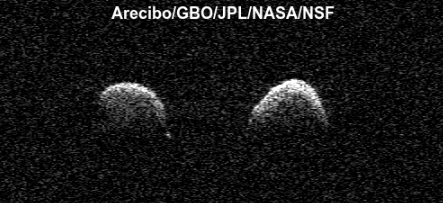Earth’s best telescopes have closed, but the hunt for dangerous aster – Astronomy Magazine
Researchers discovered a near-Earth object in December 2017 that would soon make its closest approach to Earth for the next 170 years. Observations during its flyby revealed it to be something more extraordinary than expected — a pair of equal-mass objects.
Arecibo/GBO/NSF/NASA/JPL-Caltech
The last known such event happened in Tunguska, Siberia, in 1908. A roughly 120-foot-wide (36.5 m) space rock entered Earth’s atmosphere at a blistering speed of 33,000 mph (53,100 km/h). The resulting friction heated it to tens of thousands of degrees Fahrenheit. And this, combined with intense pressure, ultimately caused the rock to dramatically explode some 5 miles (8 kilometers) above the ground. The blast, which is estimated to have released as much energy as almost 200 Hiroshima bombs, flattened trees on the ground over an area of roughly 800 square miles (2,100 square kilometers). Some sources suggest that as many as three people died.
Earth got relatively lucky with Tunguska, but that doesn’t mean asteroids aren’t still a major risk to our planet. In 2013, a space rock the size of a house exploded over Chelyabinsk, Russia, injuring more than 1,000 people as a powerful shock wave blew out countless windows, sending out shards of glass and debris. And just last year, one of these “city killer” asteroids, dubbed 2019 OK, actually passed between Earth and the Moon without astronomers noticing until just before it happened.
The asteroid caught astronomers by surprise because it approached from the direction of the Sun. And, like a baseball player squinting to locate a fly ball on a cloudless day, astronomers struggle to see small, relatively faint objects with our home star in the background.
Earth will get hit with a major asteroid again, it’s just a question of when.And that’s why astronomers think it’s important to keep a constant watch, even during a pandemic.
Fortunately, there’s only a slim chance humanity will have to face two global crises at once. And that’s something we can all be happy about right now.






